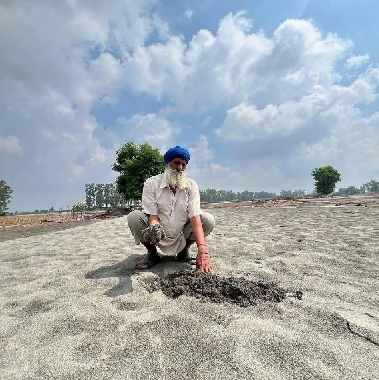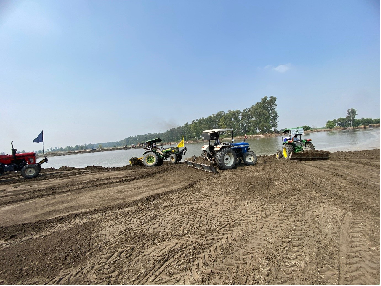The catastrophic floods that struck Punjab during August and September 2025 impacted 18 out of 23 districts, with Gurdaspur being one of the most severely affected. Approximately 60,000 hectares of agricultural land in the district were submerged, resulting in the destruction of standing crops such as paddy, sugarcane, maize, and fodder, while leaving behind sand and silt deposits ranging from 1 to 3 feet in depth in various locations. In the most severely impacted blocks, including Dera Baba Nanak and Fatehgarh Churian, over 90% of the cultivated area experienced damage. This disaster has not only incapacitated kharif production but has also jeopardized the timely sowing of wheat for the forthcoming rabi season. The issues of soil erosion and loss of fertility have exacerbated the situation, necessitating extensive land rehabilitation before any agricultural activities can recommence.

In the face of these challenges, exemplary support and recovery initiatives driven by the community have made significant progress. The Young Innovative Farmers Group, under the leadership of S. Gurbinder Singh Bajwa, has taken responsibility for five villages impacted by flooding: Ranseeke Talla, Daburji, Nabi Nagar, Rampur, and Bariyar, which together span an area of 1,200 acres. With the technical support of KVK Gurdaspur, they are employing desired farm machinery including rotavators, cultivators, cutters, super seeders etc. to integrate damaged crop residues, enhance soil structure, and simultaneously prepare the fields for wheat planting.
Additionally, the group provides diesel, fertilizers, wheat seeds, and machinery assistance to the farmers affected by the floods. Simultaneously, Baba Sukhwinder Singh Ji Kar Sewa Agwana Sahib and his followers have initiated the restoration of 2,500 acres of farmland affected by flooding and have played a role in restoring the riverbanks along the Raavi River to avert future breaches. Their volunteers are collaborating closely with the Young Innovative Farmers Group to exchange methods for water extraction, land leveling, and straw management.
Furthermore, Khalsa Aid has initiated the leveling of approximately 1,500 acres of inundated fields to enable rabi sowing. Meanwhile, the NGO Global Sikhs, through its "Saanjha Sahara" program, is assisting small and marginal farmers by supplying tractors, rotavators, laser levelers, and diesel for a duration of up to six months. Government agencies have declared a compensation of ₹20,000 per acre, along with the distribution of free wheat seeds and the postponement of loans. Additionally, the "Jisda khet, ohdi rait" policy permits farmers to clear and sell the sand that has accumulated on their fields without the need for permits.

These collaborative, government and people led efforts—bringing together farmers, NGOs, religious groups, NRIs, researchers, and local volunteers—signal a promising new model of community driven climate resilience and agricultural recovery. The spirit of volunteerism, shared resources, flexible policies (like compensation, clearance of silt & sand, loan relief), and collective problem solving has helped accelerate field restoration and offered a beacon of hope for Punjab’s agrarian heartland.
(Source: ICAR-Krishi Vigyan Kendra, Gurdaspur and ICAR- Agricultural Technology Application Research Institute, Zone-I, Ludhiana)







फेसबुक पर लाइक करें
यूट्यूब पर सदस्यता लें
X पर फॉलो करना X
इंस्टाग्राम पर लाइक करें